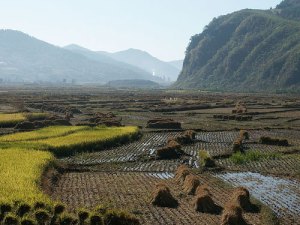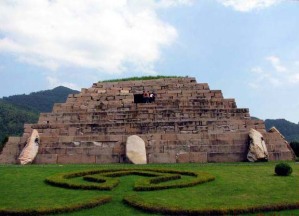Leaving Ganzhou, I head out on the G45 along the east of the Luoxiao mountains and into Jiangxi province. The highway travels along the great plains bordered by three mountain ranges, and the rice grown along here are the dominant crop. Other more lucrative crops include cotton and rapeseed make up a large proportion of the economy too. Jiangxi is the leading producer of kumquats in China.
I cross the Lushui river near ji’an and take the S69 towards Nanchang further north. To the east runs the Gan River, which stretches 885 km and cuts a line right through the Jiangxi province, before joining the Yangtze river to the north. This open corridor was the primary route for trade and communication between the North China Plain and the Yangtze River valley in the north and the territory of modern Guangdong province in the south. As a result Jiangxi has been strategically important throughout much of China’s history.
 |
 |
I am passing through a region that has so many links for the history of China, it’s difficult to pick just one. Many of these towns and hillsides were once part of a dynastic past, where rule was fierce and refusal would mean certain death. The S69 takes me up and past Zhangshu, a city with a population of over 540,000. Zhangshu can trace it’s origins back to the Western Zhou period, which ran from 1046 to 771 BC and covered the first half of the Zhou dynasty.
Arriving in Nanchang, I drive to the Grand Skylight International, where I will be staying tonight. My double room, which I ‘book’ using Booking.com costs £50 (US$80), which is extremely reasonable, given the impressive hotel I find. It stands along the western edge of the Gangjiang river and facing the Tengwang Pavilion, which I will look into tomorrow.
